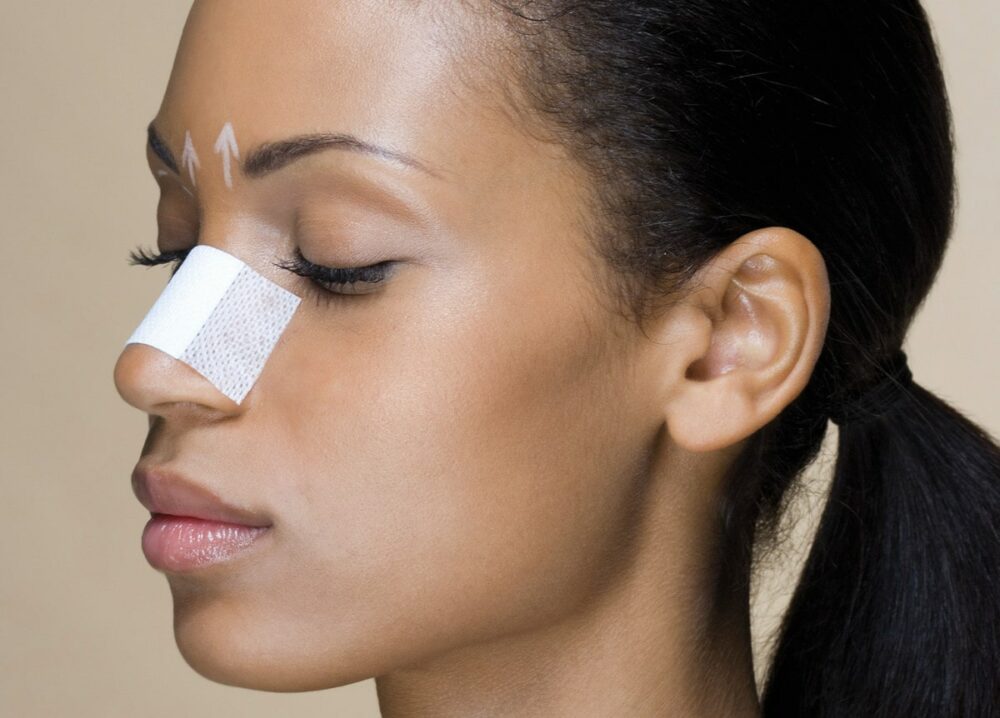Rhinoplasty is a surgical procedure on the nose that changes its shape or size by modifying the bone or cartilage. Rhinoplasty is one of the most common surgical procedures performed in the United States.
The procedure is commonly referred to as a nose job. There are a number of reasons why a patient might want to get a nose job. This is a lifesaving option for patients who might not be happy with the appearance of their facial structure. It’s also the perfect remedy for patients who might be having difficulty breathing.
A rhinoplasty does wonders for a person’s confidence and self-esteem, therefore, improving their quality of life. However, as with any cosmetic procedure, the worry on anyone’s mind before accepting the said procedure is the possibility of scarring after a nose job.

Scars are formed due to incisions or wounds in the body as their protective mechanism against infections and germs. Scar tissue in a rhinoplasty procedure typically forms at the incision site. It’s essential to do some research on what to expect from the procedure, the different kinds of rhinoplasty, the possible results of your procedure, how long it might take to heal, and the type of scars that are normal after the surgery.
As much as rhinoplasty’s incisions are well hidden, there is a chance that visible scar tissues can be created due to a number of factors.
It’s, however, highly likely that you will experience scarring, and the following are reasons why.
1. The surgeon’s qualification, technique, expertise, and level of experience.
Rhinoplasty may be a common cosmetic procedure, but there is no doubt that the procedure comes with a lot of challenges. Rhinoplasty involves working on swollen and distorted tissues around your nose. The possibility of problems arising from the procedure is inevitable even when working with the best surgeons. But still, choosing the right surgeon is of the essence, especially when it comes to their level of specialty and skills when it comes to specific surgical techniques. The most common techniques used by practicing plastic surgeons include:
- Open rhinoplasty.
- Closed rhinoplasty.
Picking the right surgeon can make the difference between a scarred, attractive nose and a satisfactory perfect nose job. A good surgeon should also be a great communicator and listener. Your surgeon should be able to walk you through these different techniques while explaining which procedure causes scarring to the nose area. Great surgeons are also equipped to predict the outcome of a procedure and foresee any possible challenges along the way.
The surgeon should also be careful not to cause any extra irritation to your nose during the procedure as it will affect the healing. This is one of the best ways to avoid scarring, as by choosing a trained, qualified, and board-certified surgeon with a great deal of experience in rhinoplasty, you can be certain that you are in the right hands. It might be challenging to find a surgeon who fits the standard criteria but researching a lot more on your surgeon’s choice is quite essential as you do not want to gamble with your face.
2. Open technique versus closed technique.
A current dilemma in a rhinoplasty procedure is making the decision on the technique that will produce the best outcome. Patients require this kind of information beforehand to be aware of what to expect and make the right informed decision as this can affect their well-being and appearance. Most patients tend to lean towards the technique that will cause less scarring, but in all honesty, both of these approaches have their perks and their cons.
Open rhinoplasty technique, also known as external rhinoplasty, is a surgical procedure performed on the soft tissue of the nostrils known as the columella. The procedure is done under anesthesia or sedation. A surgeon will make an incision on the tissue to access the underlying bone and cartilage structure. The open technique is best used on a patient who has a crooked nose, a patient undergoing revision rhinoplasty, or on patients that want to achieve a lesser nasal tip projection. The open rhinoplasty technique is a pretty good one that allows the surgeon to have a much clear view of corrections. It also provides the surgeon with room to suture and graft the skin tissue with ease. The open technique often leaves a barely visible scar that will fade away with time.
The closed rhinoplasty technique, on the other hand, refers to a rhinoplasty procedure performed through the left and suitable nostril openings. This way, a surgeon makes all the needed incisions entirely hidden within the nostrils. By the fact that this is a less invasive kind of technique as no external incisions specifically on the columellar are made, the possibility of visible scarring is null.
Both techniques can be used to produce results with minimum or no scarring at all. Qualified and expert surgeons can achieve similar results with either of these non-scarring techniques.
3. Post-care done effectively minimizes the chances of a scar.
Just like any other procedure, the lack of diligence and care can cause your rhinoplasty surgery to be a huge failure as much as the surgeon’s skill, expertise, and techniques matter; post-care is an essential factor to consider when one wants to avoid bad rhinoplasty scars as much as possible. For the patient to enjoy natural and satisfactory results, they must check on the following precautions.
- Follow the set of recovery instructions given to you by your plastic surgeon. These guidelines will aid in avoiding complications and quicken your recovery period.
- Avoid alcohol and smoking. Nicotine slows down the healing process by lowering the blood vessels, while alcohol increases swelling, bleeding and causes dehydration to the skin tissues.
- Avoid any strenuous activity for a week after the procedure, such as exercising or blowing your nose, as this may cause trauma to your nose.
- Avoid exposing yourself to the sun and use sunscreen to avoid darkening your scars.
- Use ice packs to keep the swelling down after the procedure and clean the incision site to keep away bacteria or particles that could irritate the wound.
- Look out for infections by continuously monitoring and communicating with your plastic surgeon when issues arise.
Conclusion.
If you want to minimize scarring or are afraid of getting scars from your rhinoplasty procedure, the above tips will help. With the right surgeon and diligent post-care, your nose will be able to heal in no time, scar-free!

